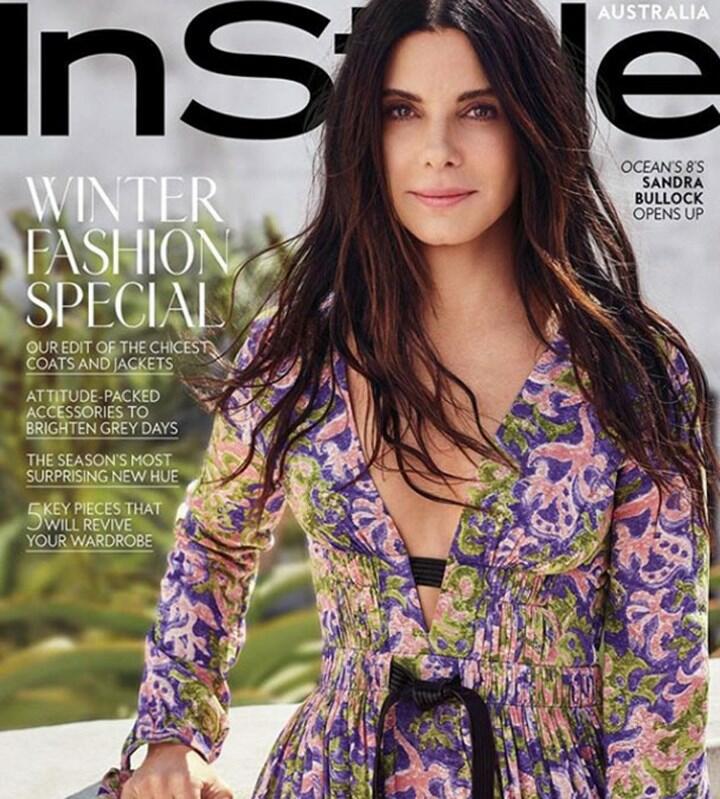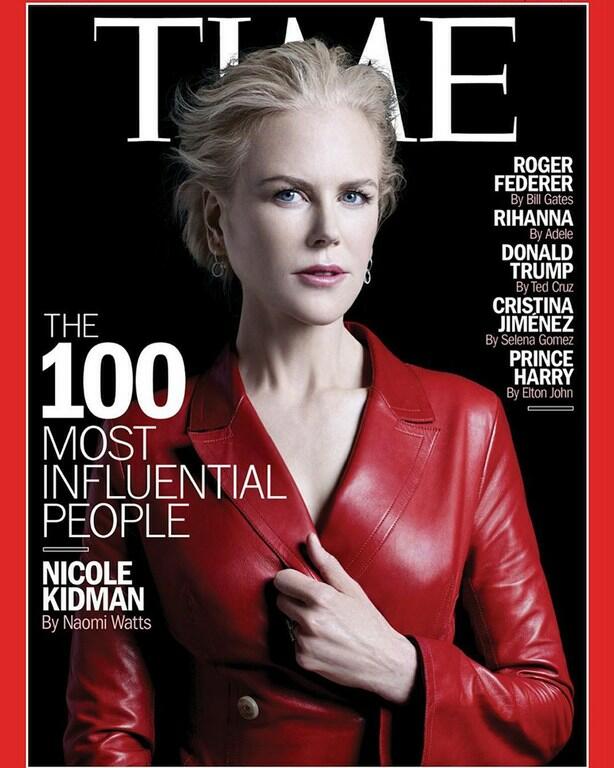Introduction
Many individuals in the USA buy magazines or, at least, see them on newsstands regularly. Magazine covers usually present the images of wealthy individuals who can be seen as role models for the population. However, it is possible to say that the men and women featured on magazine covers look very different. The issue is highly evident when older people appear on magazine covers. Their looks seem to convey different messages, as men are typically presented having wrinkles and changes in skin pigmentation, while women are shown flawless due to the extensive use of Photoshop.
The research question of this paper is: What are the differences between the representation of older men and women on magazine covers, and what are their implications? In this paper, I want to identify whether differences between people’s representations reflect the relationships of power or sexist tendencies of society. This question is important because, for many people, magazine covers can serve as examples of how healthy and wealthy individuals should look like; they may gain a wrong perspective on what beauty is for men and women. It means that it is vital to discuss this issue and enhance public awareness of the topic and the inappropriate messages magazines try to convey. The results of my analysis will be useful to outline the significance of the problem and, potentially, motivate individuals to question the ideas publishers are trying to sell.
The data chosen for this analysis includes the cover pages of Men’s Journal, In Style, and Time magazines. These particular images were used, as they are indicative of the current tendencies related to men’s and women’s representation in publication media. In addition, the differences between these photos are evident, which can help the reader to understand the claims of the paper. I had considered other alternatives, as many other magazine covers show the same tendency of over-edited pictures of women. However, the selected images seemed the most appropriate for discussing the research question of the paper. To locate these images, I searched for the names of celebrities who are more than fifty years old and have recent magazine covers. I tried to select famous individuals to ensure that potential readers can recognize them or know some information about them. Then, I chose the images published in the most popular magazines to show how even large publication media that should show high levels of expertise and ethics try to convey wrong messages to their audience.
Analysis
Image #1: Josh Brolin

The first image that I located is the picture of Josh Brolin on the cover of Men’s Journal. Brolin is an American actor born in Los Angeles; he is 51 years old (“Josh Brolin Biography”). The man is famous for the role of Thanos in Avengers series (2012-2019), as well as his appearance in W. (2008), No Country for Old Men (2007), and Milk (2007).
Brolin’s picture is iconic1, because it represents the actor, and indexical2, as the image encodes particular meanings. The man’s facial expression, skin with its wrinkles, changes in pigmentations, and other signs of aging, as well as his graying hair, are signifiers3. It is possible to say that these features signify dignity and success. From the perspective of the American culture, Brolin’s image shows that the actor is wealthy and can be considered a role model; the concept of culture is represented in his posture and confidence, while power is shown in the notion of dominance and intelligence. The form of knowledge can be perceived in the way that the picture addresses the existing differences between attitudes towards men and women but does not solve this problem or state it directly.
It is evident that although the picture is edited, the magazine did not strive to conceal the signs of aging because they do not have a negative connotation when shown in men. On the contrary, wrinkles, pigmentation, and gray hairs represent the actor’s reputation and strong personality, the signified4 of the image. The focus of the picture is on Brolin’s face; his features are almost highlighted as they reveal the actor’s strong character and intelligence. Another possible interpretation is that the magazine did not conceal the man’s wrinkles because it is common practice in publication media; it did not try to convey any meaning intentionally. However, such a perspective reveals a significant problem of differences among editing tendencies, as well as men’s and women’s representation.
Image #2: Sandra Bullock

The second image that I located is the picture of Sandra Bullock on the cover of In Style magazine. Bullock an American actress who had her first stage appearance at the age of five; the woman is 54 years old (“Sandra Bullock Biography”). The actress is famous for her roles in The Blind Side (2009), Gravity (2013), Speed (1994), and The Proposal (2009). The woman won an Academy Award for Best Actress for her role in The Blind Side, as well as a Golden Globe.
This picture can also be considered both iconic and indexical as it represents the actress and is encoded with particular meanings. The cover picture signifies a conventionally beautiful woman with no signs of aging or ailment. The message that the picture conveys is that although the actress is 54 years old, she looks young and beautiful, as other women should too. The primary signifier of this idea is Bullock’s skin; a closer look at the picture reveal that there are no wrinkles or changes in pigmentation, which is unnatural for the person of this age and can refer to the concept of culture. In this picture, power may be seen as the woman’s beauty, which is related to societal perspectives on females’ main strengths. As in Brolin’s image, the concept of knowledge addresses the existing sexist tendencies but does not refer to these issues directly.
It is evident that the editors of the image concealed these features of the woman’s face to make it look more appealing to the public. Another important signifier is that Bullock’s face is not the primary focus of the picture, as if the magazine’s editors did not want the audience to see her features in detail. The possible alternative interpretation of the image is that the actress looks younger than her age in real life too and the picture is not edited significantly. However, the photos of Bullock available online reveal that the woman looks different than on the cover of In Style magazine.
Image #3: Nicole Kidman

The second image that I located is the picture of Nicole Kidman for Time magazine. Kidman is an American-born actress who grew up in Sydney, Australia; she is 51 years old (“Nicole Kidman Biography”). The woman is famous for her roles in Dead Calm (1989), Lion (2016), Moulin Rouge! (2001), and The Hours (2002), for which she received an Academy Award. Kidman also won Emmy in 2017 and a Golden Globe in 2018.
Kidman’s photo is iconic, as it is the picture of the actress, and indexical because there are encoded meanings in it. The woman’s skin is pale and glowing; there are no wrinkles and even expression lines on her face. The signifiers of this image are similar to those presented in the picture of Brolin but they have a slightly different meaning. For instance, the woman’s look shows confidence and inner strength. However, the message these signifiers convey is that a female should be beautiful regardless of her age to be influential, which refers to the concept of culture. As in the pictures presented above, the image coveys knowledge about existing problems of society but does not solve them.
It is possible to say that the image implies that the physical appearance of a woman is the main factor of her success; it is perceived as their symbolic power. Kidman’s face in the picture does not reveal any signs of tiredness due to her hard work, as if she won her award for her conventionally attractive traits. It is possible to argue that, like Bullock, the actress looks young in real life too. However, the pictures presented in her Instagram account reveal that her appearance is not the same as the one on the photo, where even expression lines are concealed. The differences in the signified of Brolin’s and Kidman’s images reveal sexist attitudes and differences in the perspectives on power.
Discussion
All three magazine covers feature the images of famous actors of more than 50 years old; however, their representation is significantly different. Brolin’s picture shows an older man with the signs of aging that contribute to his image of a powerful, successful, and intelligent man. At the same time, Kidman’s and Bullock’s covers are over-edited, as there are no wrinkles on women’s faces and no other signs of aging, which is unnatural.
These pictures convey several wrong messages to the public. They imply that beauty and physical appearance is more significant for women than men. In addition, the images signify that males are allowed to age while females’ goal should be to look young and flawless at any age. It is clear that such ideas are sexist because they impose unrealistic standards and convince the audience that women of older age are unattractive. Nonetheless, there are no unspoken rules on how elderly men should look like, as their natural appearances are not banned or hidden from the public. Thus, although all three analyses discuss the images of older individuals, they provide different conclusions, as aging is perceived as a sign of power and intelligence in men and a synonym of unattractiveness and worthlessness in women.
It is vital to note that the images represent the relation of power in modern society. As mentioned above, Brolin’s appearance, look, and posture show dominance and strength. At the same time, although Kidman is on the cover of the issue dedicated to the most influential people, her appearance and facial traits can be considered soft and gentle, especially compared to Brolin’s ones. Magazines’ message can be interpreted as that women cannot be more powerful than men; their main defining feature is beauty, not a strong character. Evidently, such a perspective is also sexist and harmful for the perspective on females’ role in society.
The analysis of this corpus enriches the knowledge from each section as it shows that the information signified by each image is more complex than it may be seen at first sight. Modern society shows significant problems in attitudes towards women and their appearances, and discriminates people by age and gender. In addition, unfortunately, many people are used to seeing such over-edited images on magazine covers and are not aware of the wrong messages and meanings they convey.
The findings of this analysis are important as they reveal challenging issues related to the differences between the representation of women and men in modern media. The claims of this paper can be utilized to enhance public awareness of the problem and motivate publishers to be more open to changing their perspectives on beauty, power, and gender roles. Another implication of the findings is that they can be used to develop regulations, aimed to eliminate discrimination of women. For instance, magazines and other publication media can be required not to conceal significant facial features of individuals, including wrinkles and pigmentation. It is vital for all individuals to understand that women are allowed to age like men are, and that beauty is not associated with flawlessness.
Works Cited
Hapak, Peter. The 100 Most Influential People: Nicole Kidman. Time, Time USA, 2018, Web.
“Josh Brolin Biography.” Biography.com, 2019, Web.
Mobley, Miller. Photograph of Josh Brolin. Men’s Journal, American Media Inc, 2018, Web.
“Nicole Kidman Biography.” Biography.com, 2019, Web.
“Sandra Bullock Biography.” Biography.com, 2019, Web.
Smith, Carter. Photograph of Sandra Bullock. In Style, Pacific Magazines, 2018, Web.
Acknowledgements
I would like to thank my classmates for sharing their perspectives on the topic with me and helping me to improve my work.
Footnotes
- Iconic – representing the signified object.
- Indexical – showing that the signifier is caused by the signified.
- Signifiers – material things that convey meaning.
- Signified – the concept or idea signifiers convey.